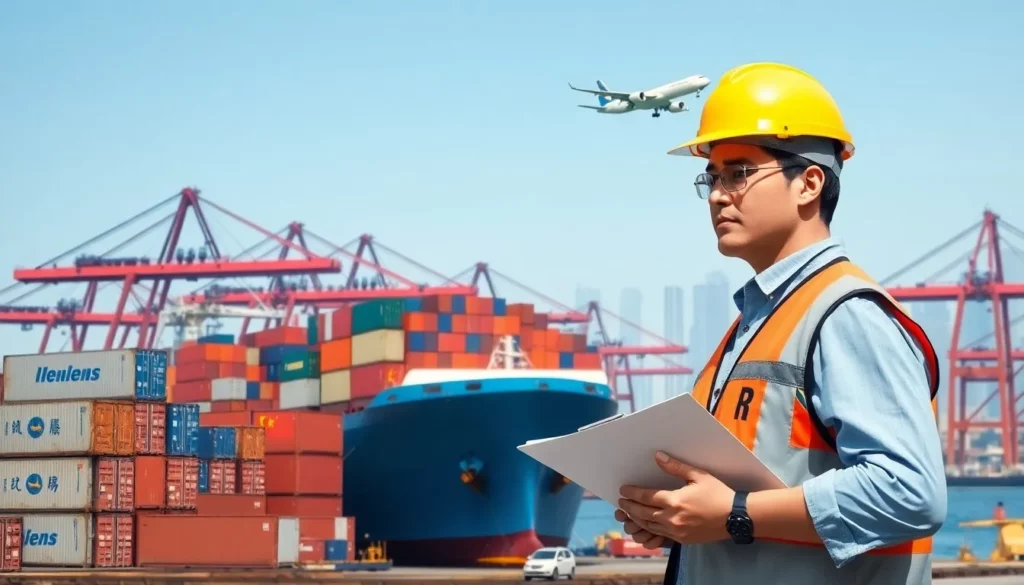For B2B importers, creating an efficient logistics plan for shipping goods from China to the Philippines is fundamental. This guide delivers the practical, expert insights you need to optimize costs, shorten transit times, and build a reliable supply chain that secures your competitive edge in the Philippine market.
When shipping from China to the Philippines, you’ll primarily choose between sea freight (7-22 days), which is cost-effective for bulk shipments, and air freight (1-7 days), ideal for your time-sensitive cargo. A successful strategy requires a firm grasp of container options, customs procedures, documentation, and calculating your total landed costs, including the Philippines’ 12% VAT.
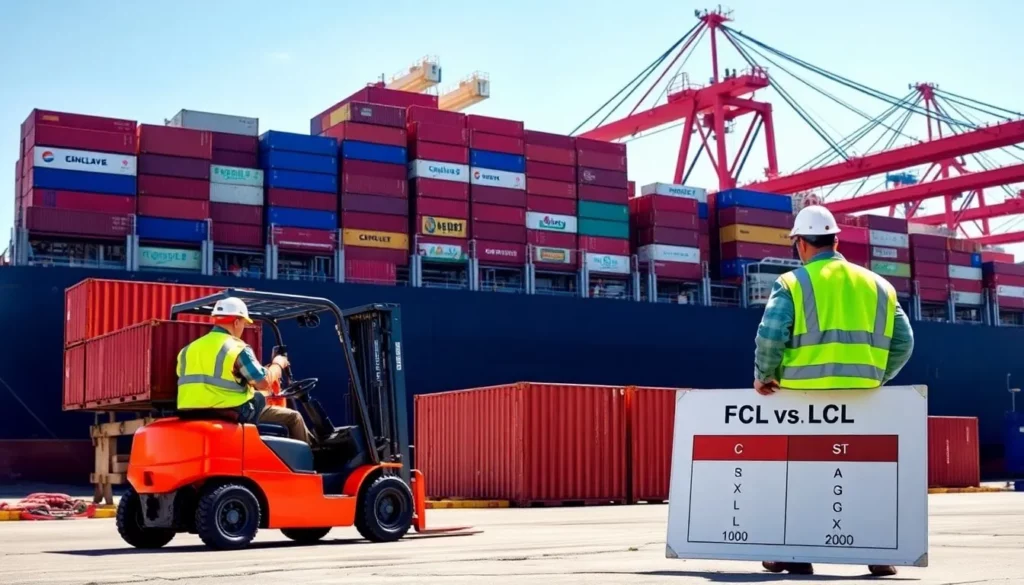
Sea Freight Deep Dive: The Ultimate Guide to Ocean Shipping
Ocean freight is the foundation of China-Philippines trade, handling the vast majority of cargo volume. For your business, whether you’re managing large-volume shipments or operating on a lean inventory model, sea freight offers unmatched cost efficiency. In my two decades in this field, I’ve seen that a clear understanding of container options and routes directly impacts your bottom line.
Core Sea Freight Services: FCL vs. LCL
Your first major decision is between Full Container Load (FCL) and Less than Container Load (LCL) shipping. This choice will fundamentally shape your logistics strategy, as each option serves distinct business needs.
| Feature | Full Container Load (FCL) | Less than Container Load (LCL) |
| Best For | High-volume shipments (typically >15 CBM). | Smaller shipments (1-15 CBM). |
| Cost Structure | Flat rate for an entire container. | Billed based on the volume (CBM) your cargo occupies. |
| Security | High. Container is sealed at origin, opened at destination. | Moderate. Shared container space means more handling. |
| Speed | Faster. No consolidation/deconsolidation delays. | Slower. Adds 7-10 days for consolidation/deconsolidation. |
| Customs | Simpler and faster clearance (typically 2-3 days quicker). | More complex due to multiple consignees in one container. |
Best Practice: Calculate your break-even point. For a 20-foot container, this is usually around 15-18 CBM, and for a 40-foot container, it’s about 25-30 CBM. If your shipment volume exceeds these points, FCL almost always offers better value.
Critical Warning: Your goods don’t need to completely fill a container to make FCL worthwhile. It’s often cheaper to ship a half-full container via FCL than to use LCL, once you factor in LCL’s per-CBM rates and handling fees.
Pro Tips: For LCL, book shipments during off-peak seasons (January-March, September-November) to find better rates and avoid peak season surcharges, which can inflate costs by 20-30%.
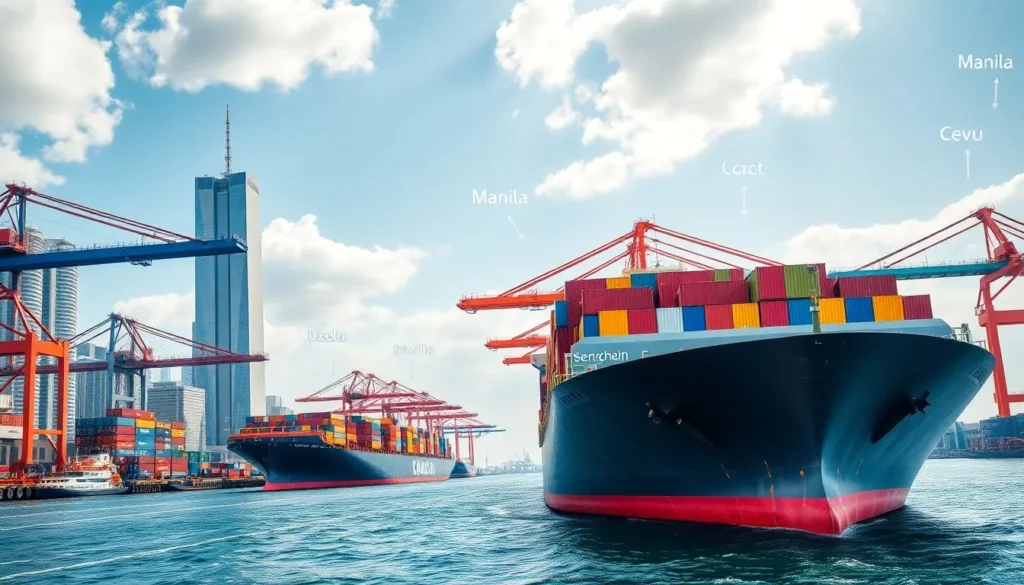
Navigating the China-Philippines Sea Routes
Strategic selection of ports and routes is key to managing your transit times and costs. Knowing the capabilities of major ports in both China and the Philippines allows you to build a more resilient supply chain.
Major Chinese Seaports of Origin
- Shanghai: The world’s largest container port, offering comprehensive services and weekly direct routes to Manila and Cebu. It’s a gateway to China’s core manufacturing regions.
- Shenzhen: A specialist in electronics and tech products. Its proximity to Hong Kong gives you extra routing flexibility and access to premium carriers.
- Ningbo-Zhoushan: One of China’s top three busiest ports, providing a cost-effective alternative to Shanghai with similar service quality and transit times.
- Guangzhou: The main port for South China’s manufacturing belt, especially strong for consumer goods, furniture, and industrial products sourced from Guangdong Province.
Key Philippine Destination Ports
- Manila: The country’s primary gateway, processing over 75% of container traffic. It offers modern customs facilities and direct access to Metro Manila’s distribution networks.
- Cebu: The main hub for the central Philippines (Visayas region). It’s an excellent alternative for regional distribution, avoiding potential congestion in Manila.
- Davao: The gateway to the southern island of Mindanao. This port serves a rapidly growing market and is a less congested alternative to Manila for certain cargo.
- Subic Bay: A free port zone known for rapid customs processing. It’s particularly attractive if you require expedited clearance and access to nearby industrial zones.
Understanding Sea Freight Transit Times (7-22 Days)
Transit times from China to the Philippines typically range from 7 to 22 days. This depends on the route, vessel schedule, and time of year. Direct services from Shenzhen or Hong Kong to Manila can take as little as 5-7 days, while routes from Shanghai average 7-10 days.
Example: A shipment from Shenzhen to Manila on a direct vessel will arrive in 5-7 days. If that same cargo is routed through a transshipment port to save money, it could take 10-14 days but might cost 15-20% less.
Port congestion, especially during the peak season from September to January, can create bottlenecks. Also, plan for the 2-3 week disruption around Chinese New Year (typically Jan-Feb). The typhoon season from June to November can also cause minor delays of 1-3 days.
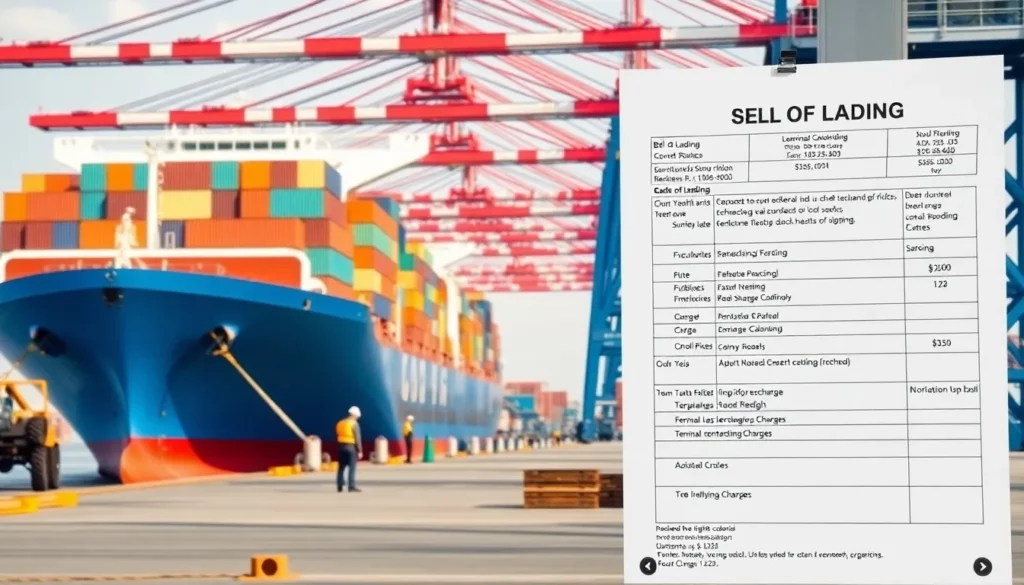
Deconstructing Sea Freight Costs and Documentation
To budget accurately, you must understand that your total shipping cost is more than just the freight rate. It includes various surcharges and fees that contribute to your final landed cost.
Analyzing Sea Freight Quotes
A typical sea freight quote is made up of multiple components. The base rate usually accounts for only 60-70% of your total bill. Other common charges include:
- Bunker Adjustment Factor (BAF): A fuel surcharge that fluctuates with global oil prices.
- Currency Adjustment Factor (CAF): Accounts for exchange rate shifts.
- Terminal Handling Charges (THC): Fees for loading/unloading at origin and destination ports.
Best Practice: Always request all-inclusive quotes that itemize every charge so you can avoid surprises. Compare offers based on the total cost, not just the base freight rate.
The Bill of Lading
The Bill of Lading (BOL) is the most important document in ocean freight. It acts as a receipt for your goods, a contract of carriage, and the title of ownership. There are a few common types:
- Ocean Bill of Lading: The standard, original document required to release cargo.
- Telex Release: An electronic message that allows your cargo to be released without presenting the original BOL, speeding up the process.
- Express Release: A digital release method that simplifies the process for trusted trading partners.
Pro Tips: I always advise clients to double-check every detail on the BOL before the vessel departs. Any corrections made after departure are costly and can lead to significant cargo delays.
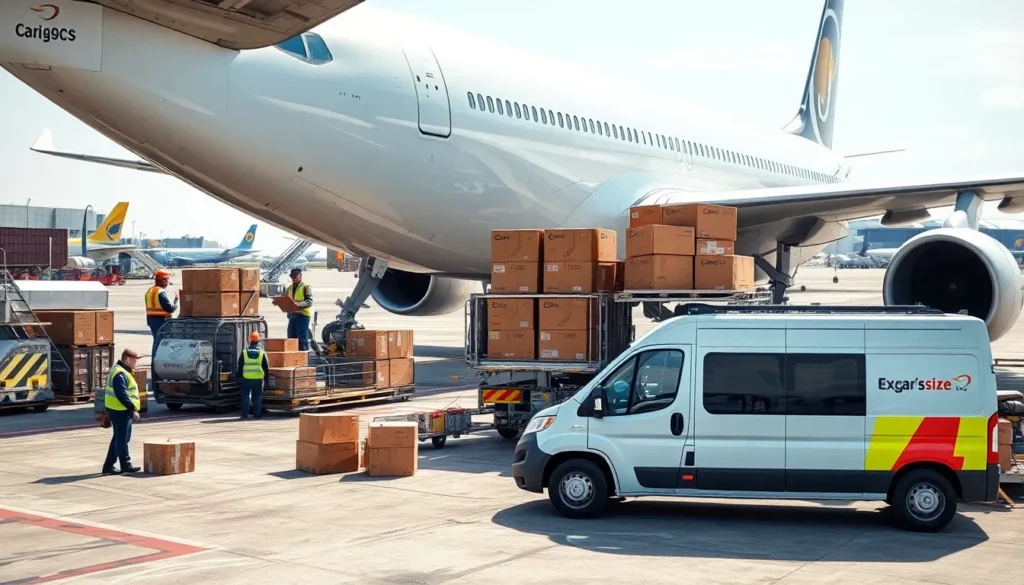
Air Freight Deep Dive: The Ultimate Guide to Prioritizing Speed
When your shipment is time-sensitive or involves high-value goods, air freight offers unparalleled speed and reliability. While the transport cost is higher than ocean freight, it enables just-in-time inventory, rapid market response, and can reduce your working capital needs.
Core Air Freight Services: Standard Cargo vs. Express Courier
Air freight is generally divided into two service categories: standard air cargo for larger B2B shipments and express courier for smaller, urgent packages.
| Feature | Standard Air Cargo | Express Courier (DHL, FedEx, UPS) |
| Best For | Medium-to-large shipments (100 kg – 1000 kg). | Small, urgent parcels (<200 kg), documents, samples. |
| Service Scope | Airport-to-airport, with forwarder managing connections. | Fully integrated door-to-door service. |
| Transit Time | 3-5 days, including customs clearance. | 1-3 business days, door-to-door. |
| Cost | More economical for larger weights. | Premium pricing; includes all services (customs, delivery). |
| Documentation | Handled by you or your freight forwarder. | Handled entirely by the courier company. |
Key Metric: Standard air cargo typically costs 40-60% less than express courier services while still delivering your goods within a 3-5 day window from major Chinese cities to Manila.
Critical Warning: Express courier costs can run from $5-8 per kilogram. This makes it an excellent value for small, urgent parcels but cost-prohibitive for larger commercial shipments.
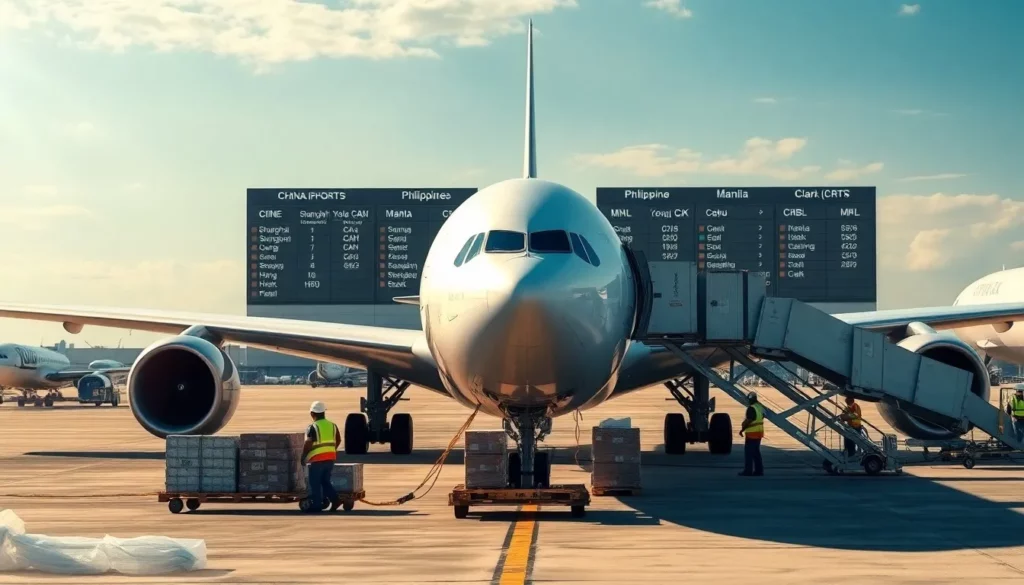
Navigating the China-Philippines Air Corridor
The air network between China and the Philippines is robust, with frequent flights from multiple hubs, giving you flexibility for your expedited shipments.
Major Chinese Air Hubs of Origin
- Shanghai (PVG): China’s primary international cargo hub, with the broadest selection of carriers and the most frequent direct flights to Manila.
- Guangzhou (CAN): The main hub for South China, providing excellent connectivity for suppliers in Guangdong Province.
- Shenzhen (SZX): A key airport for electronics and technology cargo, with modern facilities and close proximity to Hong Kong for additional routing options.
- Hong Kong (HKG): Asia’s premier cargo hub, offering an extensive global network that serves as a gateway for smaller Chinese cities without direct Philippine flights.
Key Philippine International Airports
- Manila (MNL): The primary international gateway, handling the majority of air cargo and offering the most extensive customs and distribution networks.
- Cebu (CEB): A growing hub for the central Philippines, offering a less congested alternative to Manila for reaching the Visayas markets.
- Clark (CRK): An increasingly popular alternative to Manila, with modern facilities serving northern Luzon with less congestion.
Understanding Air Freight Transit Times (1-7 Days)
Air freight transit from China to the Philippines typically takes 1-7 days, depending on the service level.
- Express couriers offer the fastest option, with guaranteed door-to-door delivery in 1-3 business days.
- Standard air cargo generally takes 3-5 days, which includes time for customs clearance and ground handling.
- Indirect routes through connecting hubs might take 3-5 days, while direct flights can arrive in just 1-2 days.
Pro Tips: Customs clearance is a major factor in your total transit time. Working with an experienced customs broker and ensuring your documentation is perfect can easily shave 1-2 days off the process.
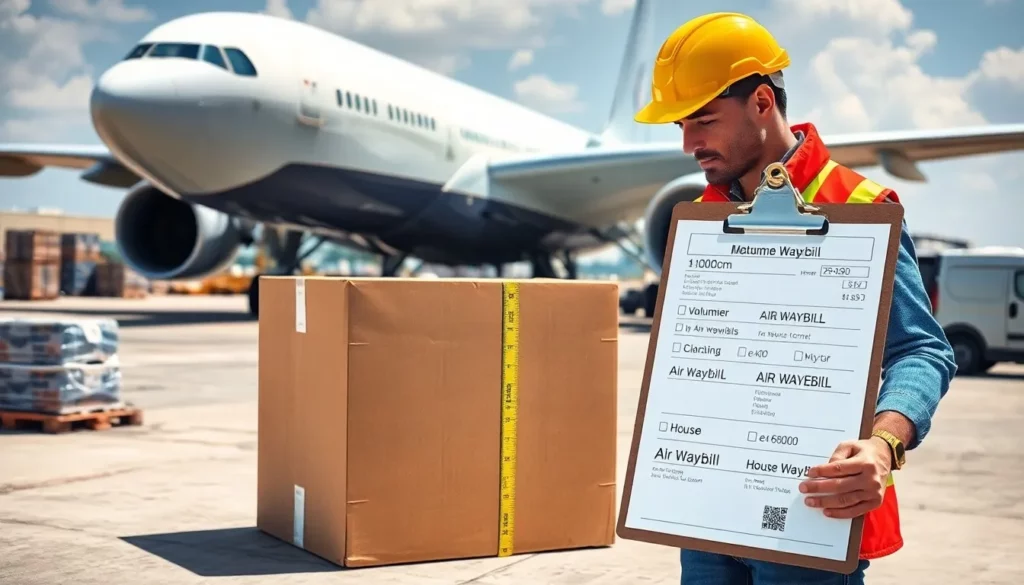
Deconstructing Air Freight Costs and Documentation
Air freight pricing is based on a concept called chargeable weight. Understanding this and the required documentation is essential for accurate budgeting.
The Critical Role of Volumetric Weight
Airlines charge based on “chargeable weight,” which is the greater of the actual physical weight or the volumetric weight. This system accounts for the space your cargo takes up on an aircraft.
The formula is: Length × Width × Height (in cm) ÷ 6000 = Volumetric Weight (in kg)
Example: You have a shipment with an actual weight of 200 kg. Its dimensions are 100cm × 80cm × 60cm. The volumetric weight is (100 * 80 * 60) / 6000 = 80 kg. In this case, the airline will charge you based on the actual weight of 200 kg because it is higher.
Best Practice: A common pitfall I’ve seen importers face is paying too much for lightweight, bulky goods. Optimize your packaging to be as dense and compact as possible. This simple step can reduce your air freight costs by 20-40%.
The Air Waybill (AWB)
The Air Waybill (AWB) is the primary contract for air shipments. It’s a non-negotiable document containing all the critical information about your cargo, routing, and consignee.
- Master Air Waybill (MAWB): Issued by the airline, this covers the consolidated shipment from airport to airport.
- House Air Waybill (HAWB): Issued by your freight forwarder, this covers your individual shipment within a consolidation. It provides a direct link of communication and instruction between you and your forwarder.
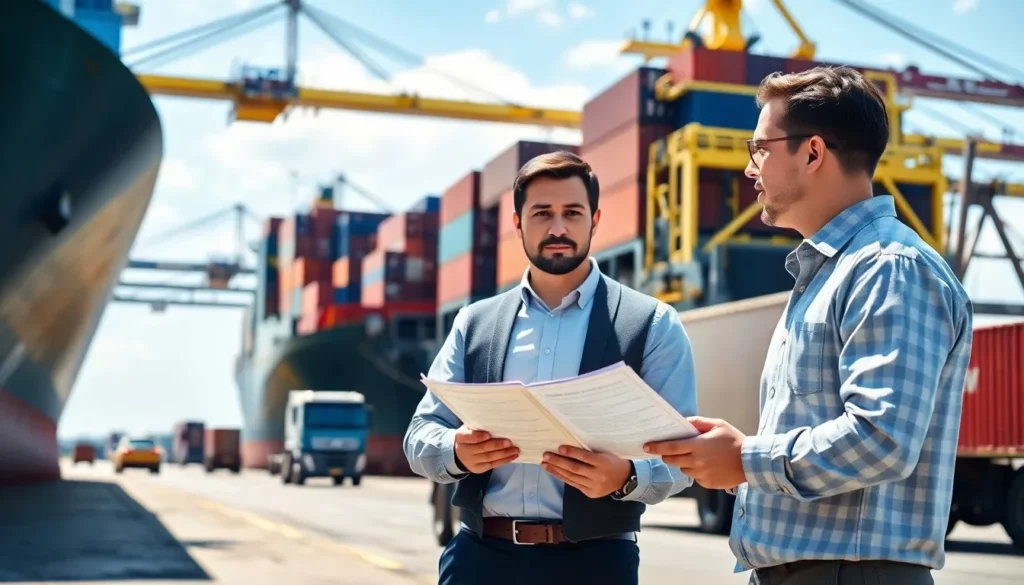
Mastering Commercial Terms and Total Landed Cost
Your choice of Incoterms and your ability to calculate the true total landed cost are strategic decisions that directly impact your profitability. Incoterms define the responsibilities, risks, and costs between you and your supplier.
Selecting Incoterms to Define Your Role
Choosing the right Incoterm establishes clear boundaries for who handles transport, insurance, and customs clearance. This decision affects your logistics complexity and cash flow.
EXW vs. FOB: Taking Control of Your Freight
| Incoterm | EXW (Ex Works) | FOB (Free On Board) |
| Your Responsibility | You manage everything from the supplier’s factory door. | You take control once goods are loaded onto the vessel at the origin port. |
| Control Level | Maximum control over the entire supply chain. | You control the main international freight leg. |
| Complexity | High. Requires knowledge of Chinese domestic logistics. | Moderate. Supplier handles export customs and port delivery. |
| Best For | Experienced importers with established networks in China. | Most importers, as it offers a good balance of cost, control, and convenience. |
Key Metric: FOB terms typically cost 8-15% more than EXW for the product, but this price includes local handling and export clearance in China, reducing your operational complexity.
CIF vs. DDP: Weighing Convenience Against Cost
| Incoterm | CIF (Cost, Insurance, and Freight) | DDP (Delivered Duty Paid) |
| Supplier’s Role | Arranges and pays for sea freight and insurance to the destination port. | Manages and pays for everything door-to-door, including import duties and taxes. |
| Your Responsibility | You handle import customs clearance and final delivery. | You simply receive the goods at your door. |
| Cost Transparency | Low. Freight and insurance costs are bundled by the supplier, often with a markup. | Very low. Costs are completely bundled, making it hard to see the true logistics expense. |
| Best For | Importers who want simplified shipping arrangements but prefer to manage their own customs. | Importers seeking maximum convenience and are willing to pay a premium for a hands-off process. |
Best Practice: Don’t take bundled pricing at face value. Ask for detailed cost breakdowns to compare different Incoterms. In my experience, an FOB arrangement paired with a freight forwarder you trust almost always provides the best balance of cost and control.
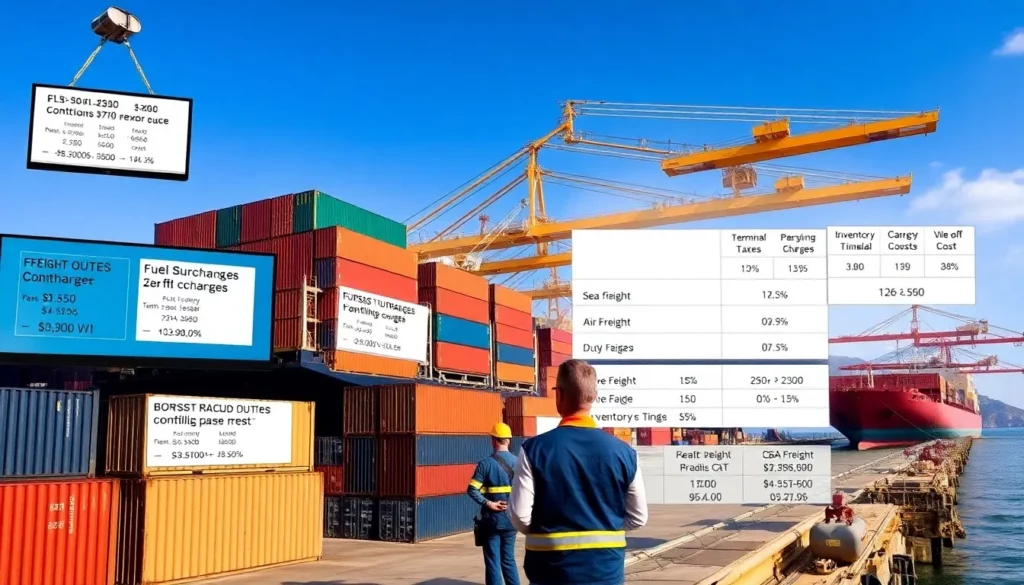
A Deep Dive into the China to Philippines Shipping Cost
A complete cost analysis goes beyond the freight quote. To protect your margins, you must account for all components of your total landed cost, including freight, duties, taxes, and other fees.
Breaking Down Freight Quotes
Your freight quote will have several line items. Base rates for ocean freight can range from $350-$650 for a 20-foot container, while LCL rates are often $30-$60 per cubic meter. Air freight base rates might be $1.8-$3.5 per kg for larger shipments. Beyond the base rate, look for:
- Fuel surcharges (fluctuate monthly)
- Currency adjustment factors
- Terminal handling charges
- Documentation and security fees
Calculating Custom Duties and the 12% VAT
Philippine customs duties are based on the product’s classification and can range from 0% to 65%, though many Chinese goods fall between 0-15% or are duty-free under trade agreements.
The key tax is the Value-Added Tax (VAT), which is a flat 12% applied to almost all imported goods.
The formula is: Duty = (CIF Value) × (Applicable Duty Rate)
The formula is: VAT = (CIF Value + Duties) × 12%
Example: For a shipment with a CIF value of $10,000 and a 5% duty rate, the calculation is:
- Duty: $10,000 × 5% = $500
- VAT: ($10,000 + $500) × 12% = $1,260
- Total taxes and duties: $1,760
Finding the Cheapest Shipping
The “cheapest” quote isn’t always the one with the lowest freight rate. True cost optimization requires analyzing the total landed cost. Sea freight has lower transport costs but ties up your capital in inventory for longer. Air freight costs more upfront but can reduce inventory holding costs and speed up your cash-to-cash cycle.
The formula is: Transit Time Value = (Inventory Value × Annual Carrying Cost %) ÷ 365 × (Transit Time Difference in Days)
Pro Tips: Always evaluate your shipping options based on the total landed cost. This includes freight, duties, taxes, insurance, and inventory carrying costs. This holistic view is the key to a truly cost-effective supply chain.
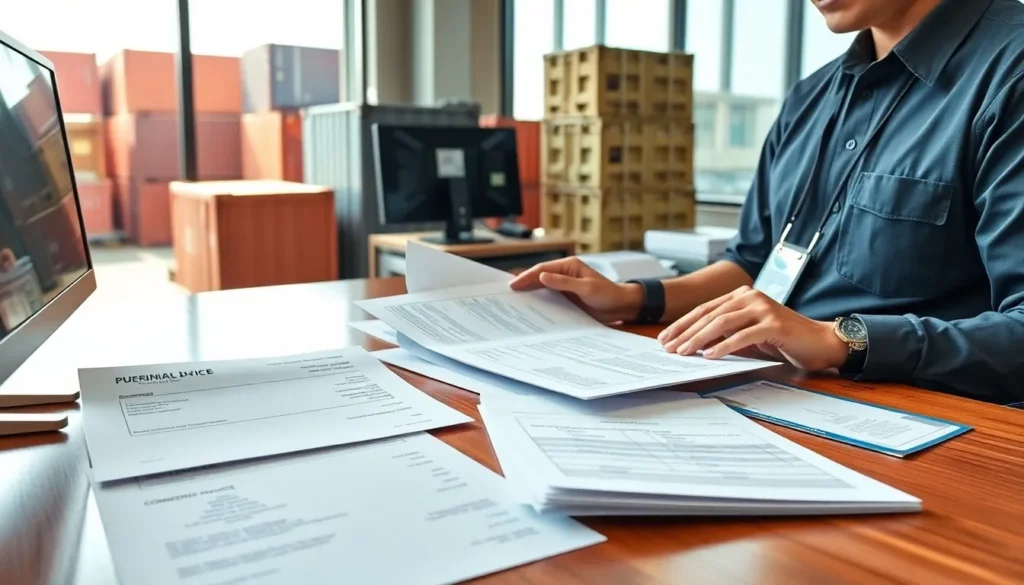
The Detailed Import Process and Customs Clearance
Successfully navigating Philippine customs requires perfect documentation and an understanding of the clearance process. Proper preparation is the key to avoiding costly delays.
Assembling All Important Documents for Import and Export
Complete and accurate paperwork is the foundation of a smooth import. Missing or incorrect documents are the number one cause of delays.
The Core Trio
- Commercial Invoice: The primary document for customs valuation. It details the buyer, seller, product descriptions, quantities, and values. Accuracy here is non-negotiable, as it determines your duty and tax assessment.
- Packing List: This provides a detailed breakdown of your shipment’s contents, including weights, dimensions, and packaging specifics. Customs uses this to verify the cargo.
- Bill of Lading (for sea) or Air Waybill (for air): This is your contract of carriage and proof of ownership, required to claim your goods upon arrival.
Critical Warning: The information on your transport document (consignee, cargo description) must match your commercial invoice and packing list exactly. Mismatches will halt your shipment and require expensive amendments.
Ensuring Compliance
- Certificate of Origin: This document verifies where your goods were manufactured and is required to claim preferential duty rates under the ASEAN-China Free Trade Agreement. Many Chinese products qualify for 0% duty with a valid certificate.
- Special Import Permits: Required for regulated goods like food, pharmaceuticals, chemicals, and telecommunications equipment.
Best Practice: Verify all permit requirements early in your sourcing process. Obtaining a permit can take weeks and may require product testing or certifications from your supplier.
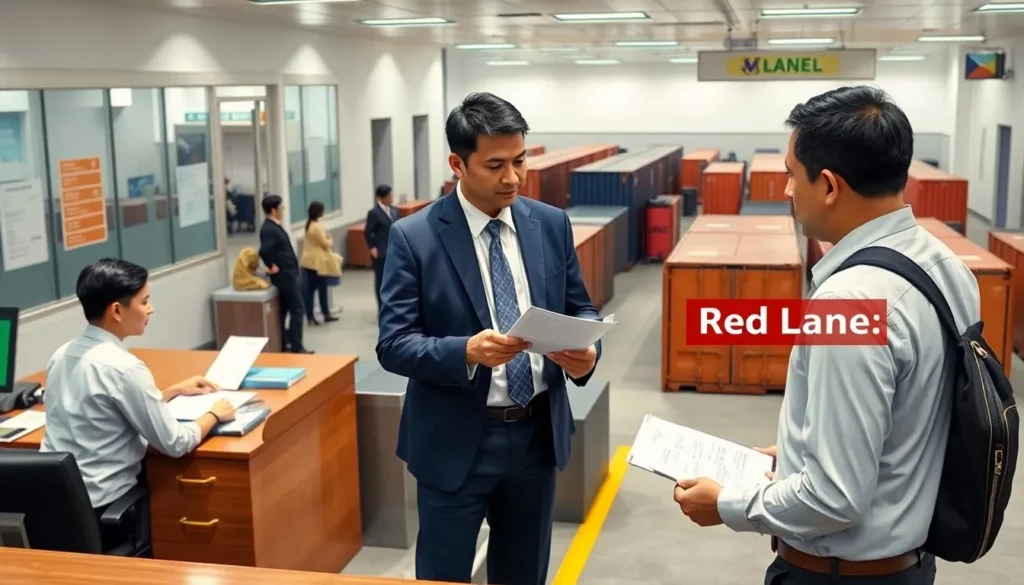
A Guide to Hassle-Free Philippine Customs Clearance
The Philippine Bureau of Customs (BOC) uses a risk-based system to categorize shipments. Your goal is to be seen as a low-risk importer.
The BOC Selectivity System Explained
- Green Lane: Immediate release with no document or physical review. This is for trusted importers with a strong compliance history.
- Yellow Lane: Requires a documentary review by a customs officer but no physical inspection. Clearance usually takes 1-2 business days.
- Red Lane: The most intensive check, requiring both a full document review and a physical inspection of the cargo. This can add 3-7 days to your clearance time.
Pro Tips: To maximize your chances of getting the Green Lane, maintain a consistent and accurate importing record. Avoid sudden, unexplained changes in product types or declared values.
The Critical Role of a Licensed Customs Broker
A licensed customs broker is an essential partner for importing into the Philippines. Their expertise in navigating complex regulations is invaluable. They handle product classification, calculate duties and taxes, and manage relationships with customs officials to resolve issues quickly.
Key Metric: A professional customs broker can often reduce clearance times by 1-3 days compared to self-clearance attempts, while also ensuring full regulatory compliance.
Prohibited vs. Restricted Items
- Prohibited Items: These cannot be imported under any circumstances. This includes narcotics, firearms, counterfeit goods, and pornographic materials.
- Restricted Items: These require special permits from government agencies before they can be imported. Examples include food products (FDA), chemicals (DENR), and telecommunications equipment (NTC).
Best Practice: Always verify the import eligibility of your product before you place an order with a supplier. Regulatory compliance can affect product design, labeling, and packaging.
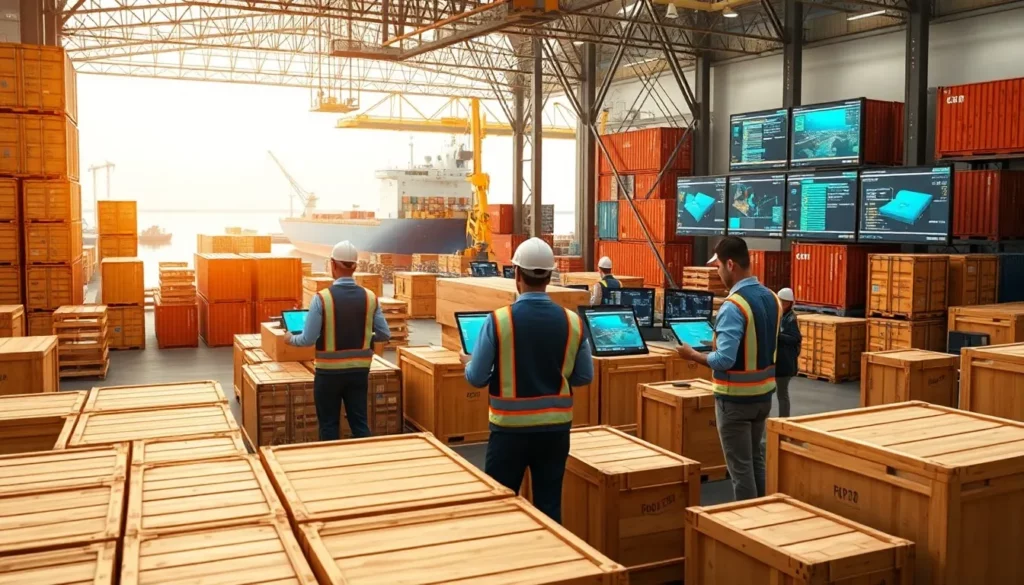
Choosing Your Partner and Optimizing Your Supply Chain
The right logistics partner does more than just move boxes; they become an extension of your team, helping you optimize your entire supply chain.
How to Find and Vet the Right Shipping Partner
When evaluating a freight forwarder, look beyond the price. Assess their service capabilities, technology, and operational stability.
Evaluating Core Transport vs. Comprehensive Logistics
| Service Type | Core Transport Provider | Comprehensive Logistics Partner |
| Focus | Moves cargo from Point A to Point B with basic support. | Manages the entire supply chain end-to-end. |
| Services | Basic freight, documentation, standard customs clearance. | Includes warehousing, inventory management, distribution, quality control, etc. |
| Best For | Importers with strong in-house logistics teams and simple needs. | Businesses seeking to outsource complexity and gain strategic supply chain advantages. |
Best Practice: Evaluate partners based on your current and future needs. A comprehensive provider offers better long-term value if you plan to scale or require specialized services.
The Importance of Real-Time Tracking
Modern tracking systems give you complete visibility over your cargo’s journey. This allows for proactive management, better inventory planning, and improved customer communication. API connectivity can even integrate this data directly into your own business systems, automating updates and reducing manual work.
Key Metric: Real-time tracking can reduce customer service inquiries by 40-60% by allowing you to proactively manage exceptions and communicate delays.
Assessing the Critical Value of Cargo Insurance
Marine cargo insurance protects you from financial loss due to damage, theft, or total loss during transit. The cost is small, typically 0.1-0.5% of the cargo’s value, but the protection is essential.
- All Risk Coverage: The most comprehensive policy, covering any physical loss or damage from an external cause.
- Named Perils Coverage: A more limited policy that only covers risks specifically listed, like fire or vessel grounding.
- War Risk and Strikes Coverage: Optional add-ons for specific political or civil risks.
Pro Tips: Weigh the cost of insurance against the risk of self-insuring. For any shipment of significant value, or when dealing with fragile goods, the peace of mind insurance provides is well worth the small premium.
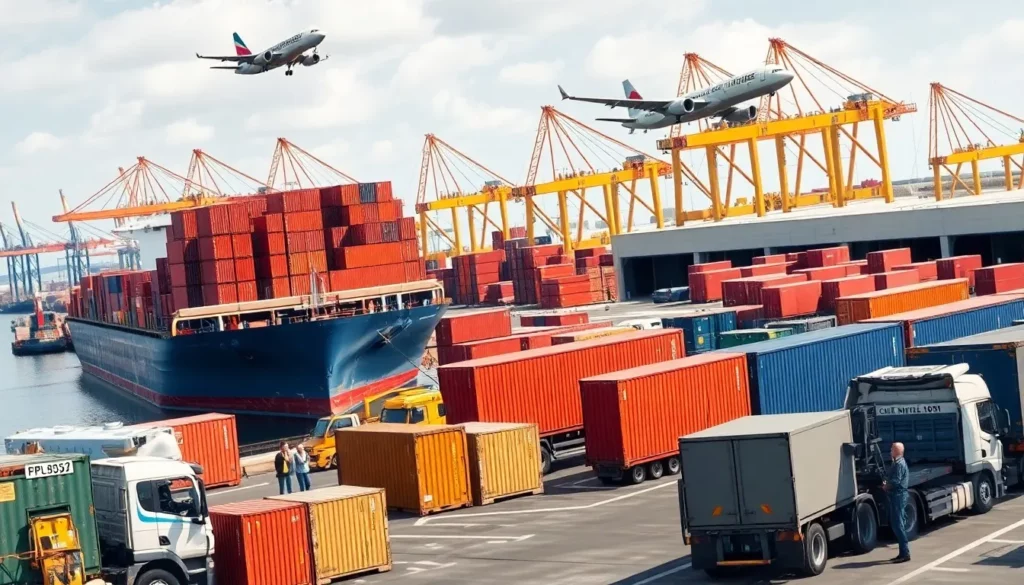
Advanced Strategies for an Efficient Shipping Experience
Sophisticated logistics strategies can create a powerful competitive advantage by optimizing costs and improving service levels.
Route Optimization and Integrating Your Logistics
A truly efficient supply chain uses a mix of transport modes. Use sea freight for your bulk stock replenishment and air freight for urgent, high-value orders or samples. This multi-modal approach balances cost and speed. You can also work with your forwarder on consolidation strategies, combining cargo from multiple suppliers into a single, more cost-effective shipment.
Best Practice: Develop an annual shipping calendar. By planning around peak seasons, Chinese holidays, and your own demand cycles, you can make smarter decisions that optimize timing and reduce costs.
Your Step-by-Step Action Plan: A Summary for Importers
Follow this framework to implement an efficient and compliant import operation from China to the Philippines.
- Define Your Core Strategy: First, analyze your cargo volume, urgency, and budget to choose the right shipping mode (sea or air). Then, select the Incoterm (e.g., FOB, EXW) that best balances cost, control, and risk for your business model.
- Calculate Your Estimated Total Landed Cost: Get detailed freight quotes that itemize all charges. Research the correct HS codes for your products to determine the applicable customs duties and add the 12% VAT to calculate your full tax obligation.
- Complete Your Philippine Importer Registration: Before your first shipment, register your business with both the Bureau of Internal Revenue (BIR) to get an Import Clearance Certificate and the Bureau of Customs (BOC) to get an account in their system.
- Select and Engage Your Freight Forwarding Partner: Vet potential partners on their service capabilities, customs expertise, technology, and performance record. Negotiate a clear service level agreement that defines responsibilities and pricing.
- Coordinate with Your Supplier: Work with your supplier to ensure all goods are prepared and packaged correctly for international transit. Double-check that all commercial documents (invoice, packing list, certificates) are accurate and complete.
- Work with Your Forwarder to Clear Customs: Your forwarder will use your documents to submit the electronic customs declaration. They will manage the process, preparing for any potential examinations and advising you of clearance status.
- Arrange Final Mile Delivery: Once customs duties and taxes are paid and the cargo is released, coordinate with your forwarder or a local trucking company to arrange final delivery from the port or airport to your warehouse or facility.
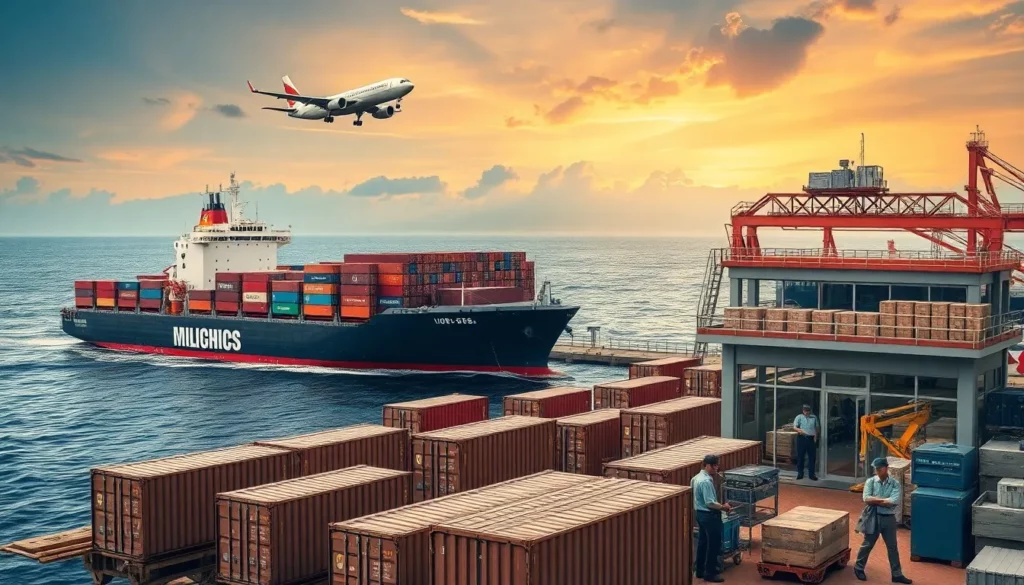
Conclusion
Mastering your shipping from China to the Philippines goes beyond simply picking the cheapest freight rate. True success comes from understanding the interplay of logistics, customs, and costs. Whether you choose sea or air, your ability to navigate Philippine customs, accurately calculate total landed costs including the 12% VAT, and partner with the right experts will define your success. Contact AIIDII to see how our expertise can build a stronger, more profitable supply chain for your business.
Frequently Asked Questions (FAQs)
1. For a 200kg shipment, what would make me choose LCL sea freight over air freight?
Choose LCL sea freight if cost is your primary concern and your delivery timeline is flexible (7-22 days vs. 3-5 for air). This is especially true for dense cargo where air freight’s volumetric weight pricing would be too high. If the shipment is not urgent, LCL offers significant savings.
2. If I use DDP Incoterms, do I still need to register as an importer in the Philippines?
Yes, you absolutely must register as the importer of record with the Philippine Bureau of Customs (BOC). While the DDP seller arranges clearance, Philippine law requires the consignee (your business) to be legally registered to import goods. Your seller’s broker will use your registration to clear the shipment.
3. What is the most common reason a shipment gets flagged for the ‘Red Lane’?
The most common trigger is a perceived value discrepancy. Philippine Customs compares your declared value against a database of historical prices. If your value seems too low, it will likely be flagged for a physical inspection. New importers or inconsistent filings also increase this risk.
4. How much should I budget for cargo insurance, and is it always necessary?
Budget between 0.1% to 0.5% of your cargo’s value for All Risk insurance. While not legally mandatory, it is highly recommended for any shipment of significant value. If a potential loss would be financially damaging, the small cost of insurance provides essential protection and peace of mind.
5. Can a single freight forwarder handle customs brokerage and door-to-door delivery?
Yes, a full-service freight forwarder can and should handle the entire process. These integrated providers act as a single point of contact for transportation, customs clearance, and final delivery. This streamlines communication and ensures smoother coordination from end to end.

